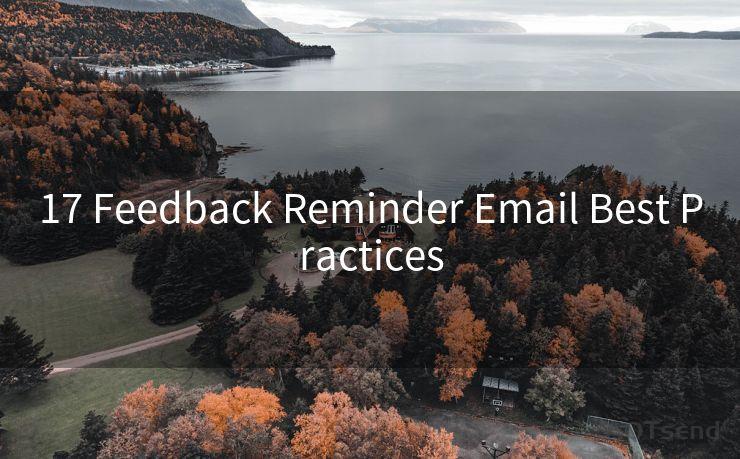17 Feedback Reminder Email Best Practices




In the world of customer service, feedback is crucial. It not only helps improve products and services but also fosters a stronger relationship between businesses and their clients. One effective way to gather feedback is through feedback reminder emails. Here are 17 best practices for crafting these emails to maximize customer engagement.
1. Clear and Concise Subject Line
Start with a subject line that's direct and to the point. For example, "Your Feedback on Our Service Is Needed!" This grabs the reader's attention and sets the tone for the email.
2. Personalized Greeting
Use the customer's name in the greeting to make the email more personal. This helps in establishing a connection and makes the customer feel valued.
3. Express Gratitude
Thank the customer for their business and their time. Acknowledging their importance sets a positive tone for the feedback request.
4. Specific and Relevant Feedback Request
Be clear about what type of feedback you're seeking. Whether it's about a recent purchase, customer service experience, or product quality, specificity helps guide the customer's response.
5. Use Simple and Direct Language
Avoid complex sentences and jargon. Keep the email conversational and easy to understand.
6. Provide a Link or Form
Make it easy for customers to give feedback by including a direct link to a feedback form or survey. This removes any friction in the process.
7. Incentivize Feedback
Consider offering a small reward or incentive for providing feedback. This could be a discount, a coupon, or early access to a new product.
8. Respect Privacy
Reassure customers that their feedback and personal information are safe and will only be used for improvement purposes.
9. Keep It Short
Don't make the email too long or wordy. Get to the point quickly and efficiently.
10. Use Active Voice
Writing in the active voice makes your message more engaging and direct.
11. Test Different Versions
A/B testing can help you determine which email version gets the best response.
12. Optimize for Mobile
Ensure your email is mobile-friendly, as many customers will be reading it on their smartphones.

13. Follow Up (But Not Too Much)
A gentle reminder after a few days can increase response rates, but avoid being too pushy or sending too many reminders.
14. Use Visual Elements Sparingly
While visuals can enhance an email, too many can distract from the main message. Use them strategically.
15. Professional Tone
Maintain a professional yet friendly tone in your email. This balances formality with approachability.
16. Call to Action (CTA)
Include a clear and prominent CTA button or link that directs customers to the feedback form or survey.
17. Measure and Adjust
Track the performance of your emails and adjust your strategy based on the data. This continuous improvement cycle is key to optimizing your feedback collection process.
By following these 17 best practices, you can craft feedback reminder emails that engage customers and effectively gather valuable insights for improving your business. Remember, the goal is to make the feedback process as seamless and enjoyable as possible for your customers.
🔔🔔🔔
【AOTsend Email API】:AOTsend is a Managed Email Service for sending transactional emails. Support Email Types: reminders, authentication, confirmations, notifications, verification codes, invoices, password resets, account activations, billing statements, two-factor authentication (2FA), and one-time passwords (OTP) emails, etc. $0.28 per 1000 Emails. 99% Delivery, 98% Inbox Rate.
You might be interested in:
Why did we start the AOTsend project, Brand Story?
What is a Managed Email API, How it Works?
Best 25+ Email Marketing Platforms (Authority,Keywords&Traffic Comparison)
Best 24+ Email Marketing Service (Price, Pros&Cons Comparison)
Email APIs vs SMTP: How they Works, Any Difference?




Scan the QR code to access on your mobile device.
Copyright notice: This article is published by AotSend. Reproduction requires attribution.
Article Link:https://www.mailwot.com/p6210.html



